The brush tool in Photoshop is one of the most versatile tools at your disposal. Whether you want to create creative illustrations, retouching, or complex paintings, the brush is always by your side. In this guide, I'll show you how to use the brush tool effectively to achieve impressive results. We will go through the various functions and settings step by step.
Main Insights
- The brush tool allows for versatile adjustments to size, hardness, and opacity.
- With pressure sensitivity and specific settings, you can control the brush stroke precisely.
- By creating your own brushes, you can develop a personal style.
Brush Tool Settings
To utilize the brush tool optimally, start with the basic features. Right-clicking on the brush icon opens the brush menu, where you can adjust the size and hardness of the brush.
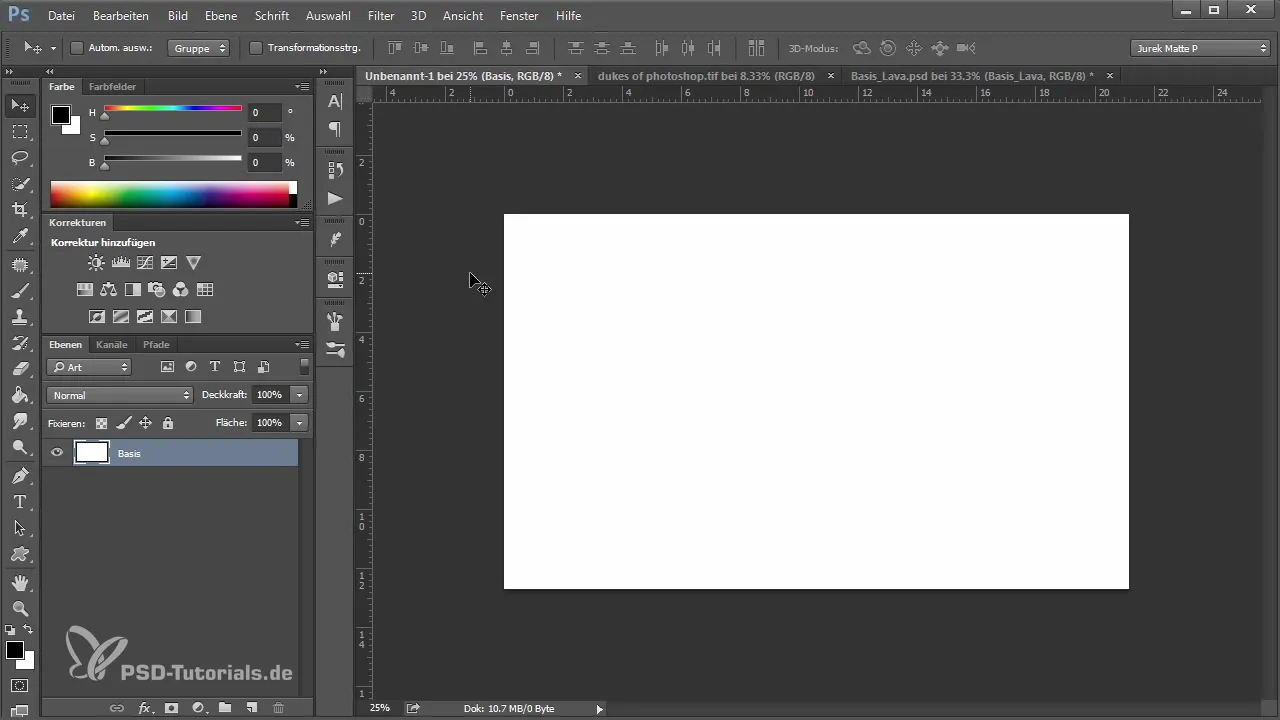
You can adjust the size of the brush by dragging in the menu. A larger tip leads to broader strokes, while a smaller tip allows for fine details.
The hardness of the brush is crucial for the desired effect: softer brush tips create smooth transitions, while hard tips create clear lines.
But that's not all – by holding the Alt key and right-clicking, you can change the size and hardness directly in the workspace. This is especially useful when you want to make quick adjustments.
Opacity and Flow
Opacity is also an important setting. With 100% opacity, you create an opaque surface. A reduced opacity, on the other hand, results in transparent color layers, ideal for painting soft transitions and retouching.
The flow is another parameter you should adjust. It determines how much paint is applied each time you use the brush. The lower the flow, the softer the paint application. This is especially helpful when painting layers over each other to create a homogeneous surface.
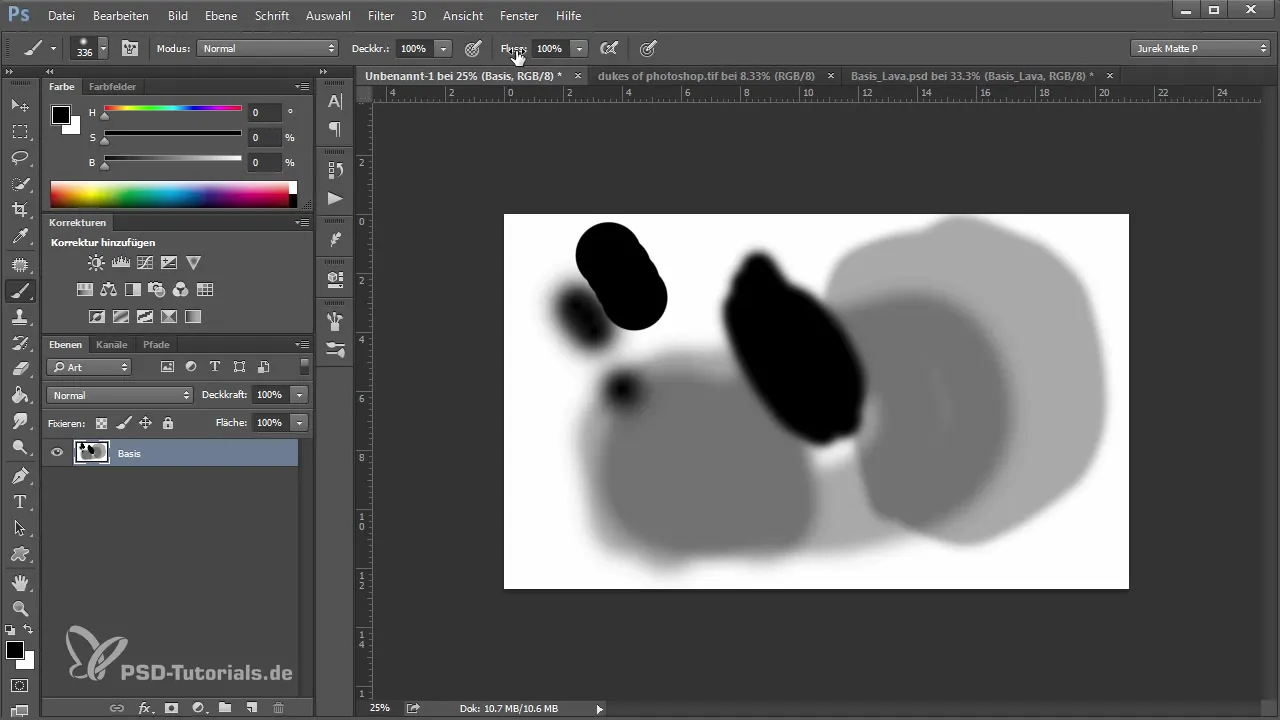
Pressure Sensitivity and Brush Stroke Control
With a graphic tablet, you can use pressure sensitivity to control the brush stroke dynamically. With light pressure, the color application is slightly transparent, while with stronger pressure, you apply more color.
In addition to pressure sensitivity, you can adjust the size of your brush stroke. Light pressure results in fine lines, while more pressure produces broader strokes.
Advanced Brush Options
Photoshop also allows you to create your own brushes. You can define the shape and texture of your brush tips to create a unique look. To access these features, select "Window" and then "Brush" to make specific adjustments.
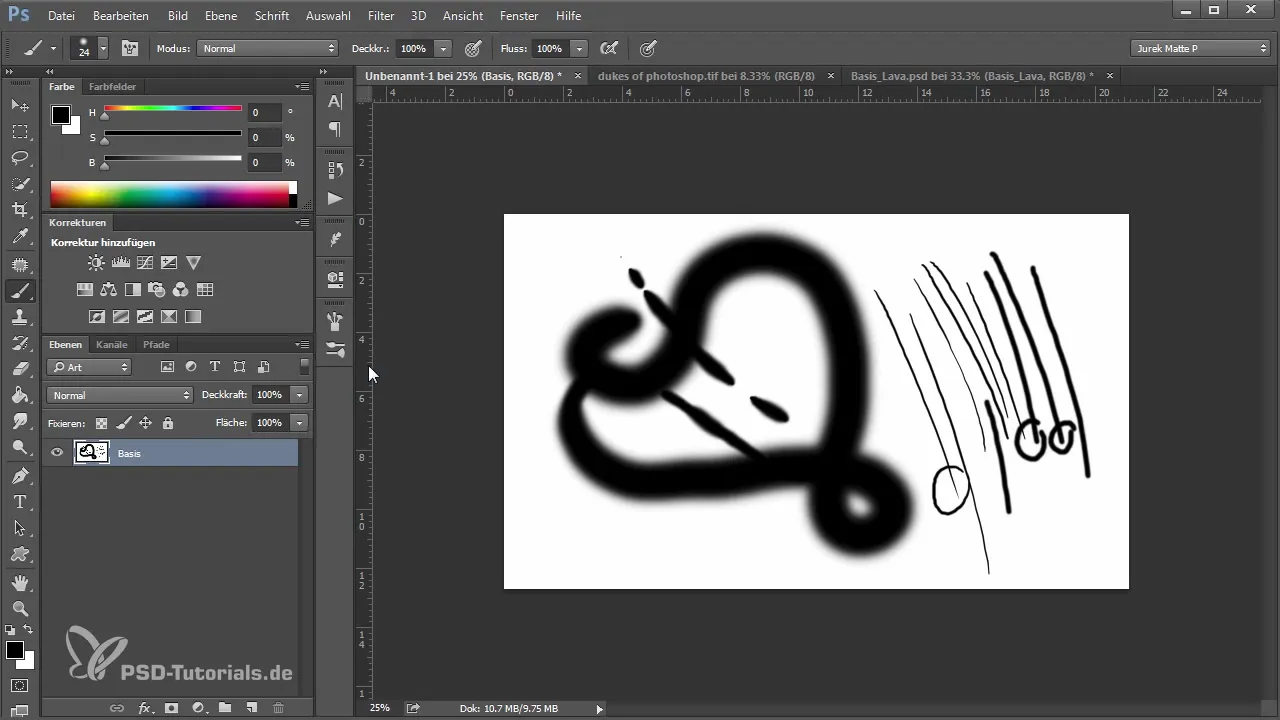
Here you can set the shape attributes – important if you want to work with textures or special patterns. Also vary the size for interesting effects.
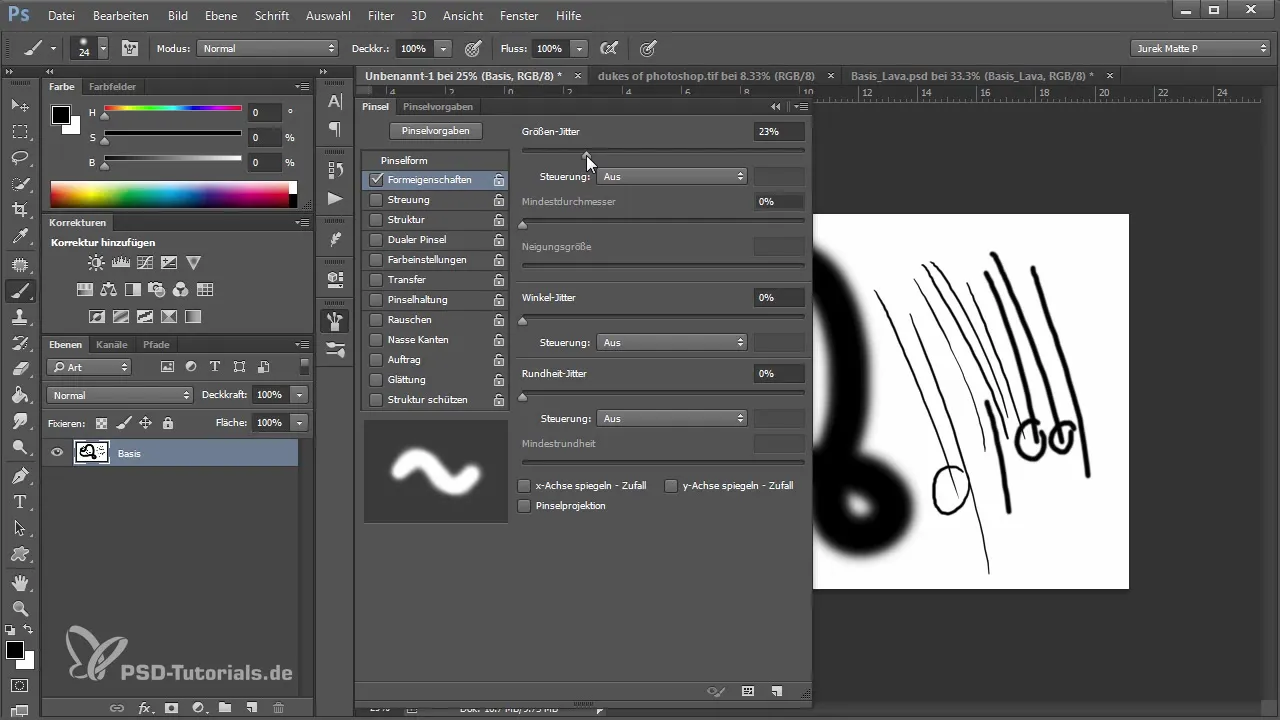
Another interesting parameter is the angle jitter, which is particularly useful for non-round brush tips. This allows you to create effects like rain or clouds.
Colors and Shading
A clever trick for selecting colors is using the foreground and background color. You can switch between these colors by pressing the "X" key. This way, you always keep track of the colors you are using.
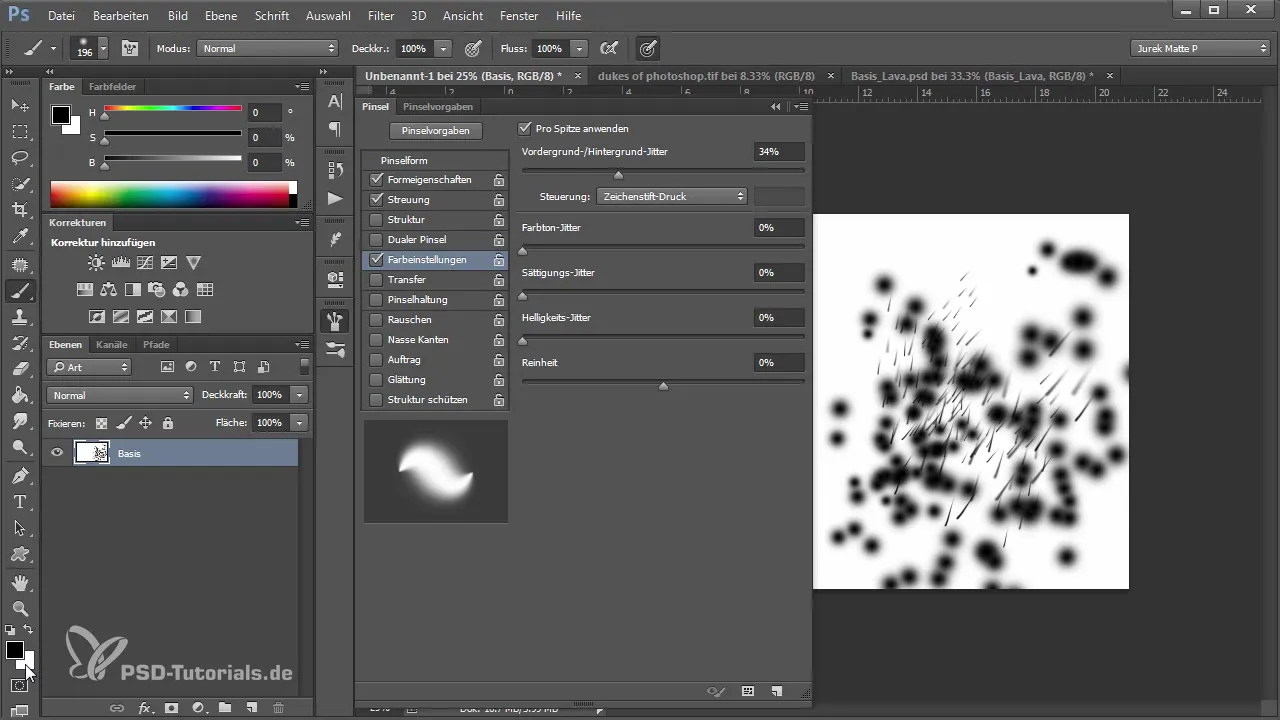
If you also adjust the color settings and use pressure sensitivity, you can easily work with various effects. By cleverly alternating between foreground and background color, you can create wonderfully dynamic images.
Areas of Application
An interesting way to showcase your skills is to paint natural landscapes or abstract art. The effect you achieve with your brush strokes can range from almost invisible to impressively bold.
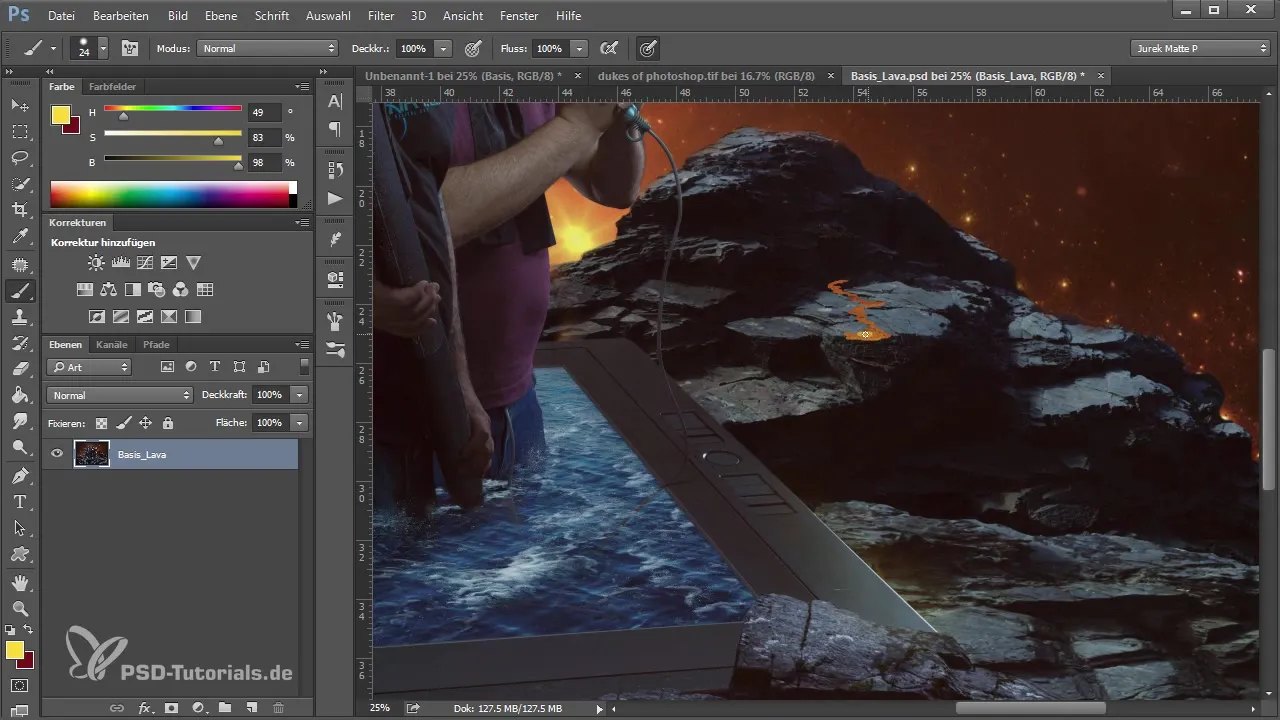
To further develop your style, spend some time experimenting with the various brushes and their parameters. It's great fun to play around with different combinations and see what you can create.
Summary – Master the Brush Tool in Photoshop
The diverse functions of the brush tool offer you the opportunity to elevate your creativity to a whole new level. By learning the various settings that you can adjust for size, hardness, opacity, and flow, you'll gain a better sense of control over your painting.
Take the time to experiment with the advanced brush options. Creating your own brushes can help you develop a unique style!
Frequently Asked Questions
How can I adjust the size of my brush?You can adjust the size of the brush through the context menu with a right-click or by dragging the mouse while holding the Alt key and right-clicking.
What is the difference between opacity and flow?Opacity determines how strongly the color is applied, while flow determines how much color is applied with each stroke.
Where can I find the brush options in Photoshop?You can access the brush options through the menu bar under "Window" and then "Brush."
How do I create my own brushes in Photoshop?Select a brush, go into the brush menu, and set the desired properties. Then you can save it and use it as your own brush.
Can I use pressure sensitivity without a graphic tablet?No, pressure sensitivity is only possible with a graphic tablet since it can detect pressure levels.


